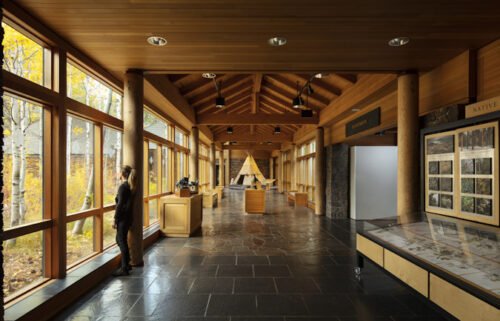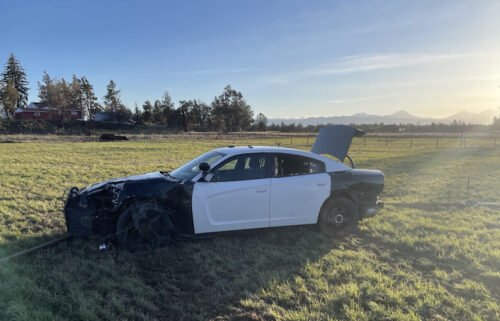Supreme Court justices finally get together behind closed doors with a long to-do list

After a three-month respite from last term's divisive decisions
By Ariane de Vogue, CNN Supreme Court Reporter
After a three-month respite from last term’s divisive decisions, Supreme Court justices will return to Washington on Wednesday for the first closed-door conference of the new term.
The justices have a lot to discuss, from new cases to consider, to how to re-open the court amid Covid-19 and what, if anything, there is to say about the investigation into the leak of the draft opinion to reverse Roe v. Wade.
The so-called “long conference” comes amidst renewed questions concerning the legitimacy of the court, and as the abortion decision has placed the justices at the epicenter of the upcoming midterms.
Public approval of the court has plummeted. Retired Justice Stephen Breyer, on the sidelines now after almost 30 years on the bench, warned his colleagues in an exclusive talk with CNN’s Chris Wallace about decisions written “too rigidly” that could “bite you in the back.”
It remains to be seen if the bad feelings of the previous term continue into the new session.
Earlier this month, Chief Justice John Roberts acknowledged during a talk in Colorado that the justices don’t always see eye to eye at the closed-door conference meetings. But he called the discussions respectful. “There is no sappy façade of fake affection,” he said, just “direct explanations” of individual positions.
Only justices are allowed in the room and as per tradition, if there is a knock at the door Justice Ketanji Brown Jackson, as the court’s newest justice, will rise to address the inquiry.
On Wednesday, the nine judges will go around the table and speak in order of seniority, starting with Roberts and ending with Jackson. Although she won’t get to speak until all her other colleagues have made their positions known, she will benefit from an unwritten rule: no one talks twice until everyone has spoken once.
Before they even get to the reams of cases that have piled up during the summer recess, the court still has to make several decisions related to the public’s access to their deliberations.
Justice Elena Kagan told an audience in New York on September 12 that those decisions will be made by the end of the month. She also said her colleagues planned to address the elephant in the room: the status of the investigation that was launched last term to identify the person who leaked a draft of the abortion decision that became public in May.
At the very least, Kagan noted, even if a “perpetrator” hasn’t been found, the court is likely to take up new security procedures to ensure that such a leak never happens again.
New rules could transform the flow of the decision-making process, changing the way the justices communicate internally about the cases.
Roberts has also announced that after more than two years of Covid restrictions, members of the public will be allowed back into the courtroom, although he has yet to lay out any details.
Before October, the justices will also likely discuss whether the court will continue to allow a live audio feed of oral arguments, a practice that began during the pandemic that enables the public to follow along in real time.
Shaping the new term
The bulk of the justices’ time Wednesday will be spent shaping the new term.
There are several high-profile petitions pending, including a handful of challenges related to the long-term conservative effort to weaken so-called administrative state.
Conservatives, including Justice Neil Gorsuch and Brett Kavanaugh, believe that federal agencies have become too powerful and are comprised of unelected officials who are unaccountable to the public. Last term, the court moved to scale back the authority of the Environmental Protection Agency, triggering an angry dissent from Kagan.
“The Court appoints itself — instead of Congress or the expert agency — the decision-maker on climate policy,” she wrote. “I cannot think of many things more frightening.”
Two pending petitions target the Bureau of Alcohol, Tobacco, Firearms and Explosives decision to ban bump stocks — devices that essentially allow shooters to fire semiautomatic rifles continuously with one pull of the trigger. The attachments were banned during the Trump administration in the wake of a mass shooting in 2017.
In a similar dispute, a veteran is challenging regulations put forward by the Department of Veterans Affairs related to certain disability benefits. Air Force veteran Thomas Buffington was diagnosed with a disability and became eligible to receive disability benefits in 2000. In 2003, he was recalled to active duty in the Air National Guard. Following the law, he discontinued receiving the benefits for that period of time so he wouldn’t be paid double.
When he ended active duty service in 2005, Buffington waited a couple of years then asked for his retroactive disability benefits to be paid back for the periods of time he had not received active-duty pay. But the Department of Veterans Affairs said that it had enacted a regulation with the requirement that such a request has to be made within a year and that he had waited too long.
Buffington says the actions are “arbitrary” and not grounded in the statutory text that governs disability payments.
The justices are also scheduled to consider a case concerning the scope of a federal law that internet companies say protects them from lawsuits stemming from third-party content posted on their sites.
The law at issue — section 230 of the Communications Decency Act — has attracted the attention of Justice Clarence Thomas in the past. He has called into question lower court decisions that have construed the law to confer sweeping immunity to some of the biggest tech companies in the world including Google, Facebook and Twitter.
Others have questioned whether the law only protects the companies from traditional decisions such as deciding when to publish or alter content, but it does not cover activities that promote or recommend content.
Although there are no cases directly related to abortion on the conference list, South Carolina is seeking to exclude a Planned Parenthood affiliate from Medicaid funding for non-abortion health services because the organization also offers abortion. A lower court ruled in favor of Planned Parenthood.
“This case is not about abortion,” Judge J. Harvie Wilkinson wrote for a panel of judges on the United States Court of Appeals for the Fourth Circuit. “It is about Congress’s desire that Medicaid recipients have their choice of qualified Medicaid providers.”
The court held that to allow a state to disqualify Planned Parenthood would “nullify Congress’ manifest intent to provide our less fortunate citizens the opportunity to select a medical provider of their choice.”
And while the midterms will play out this fall, the justices have already decided to take up a case out of North Carolina concerning an obscure legal doctrine that could change the way elections are decided going forward.
Now challengers making similar claims about Pennsylvania maps want the justices to consider the same issue as it applies to their case. The justices could decide to consolidate the two cases or put the latest petition on hold for now.
And while the court is lifting Covid restrictions and opening its doors, lawyers for 10 states are returning to the justices in an effort to lift a vaccine mandate for workers in most federally funded healthcare facilities that receive Medicare or Medicaid funds.
In January, the court allowed the mandates to remain in effect pending legal challenges over the dissent of conservative Justices Samuel Alito, Amy Coney Barrett, Thomas and Gorsuch.
The-CNN-Wire
™ & © 2022 Cable News Network, Inc., a Warner Bros. Discovery Company. All rights reserved.



